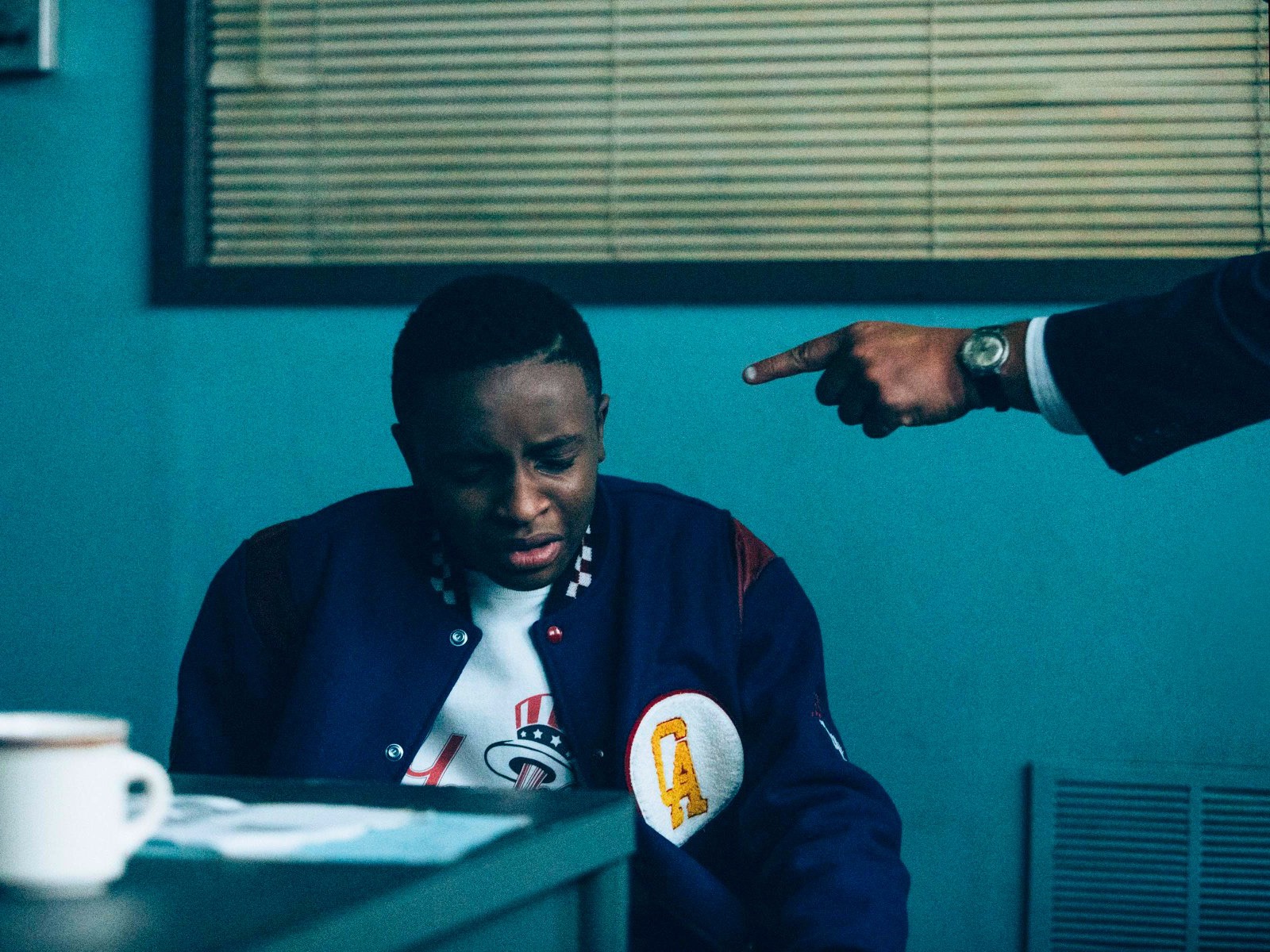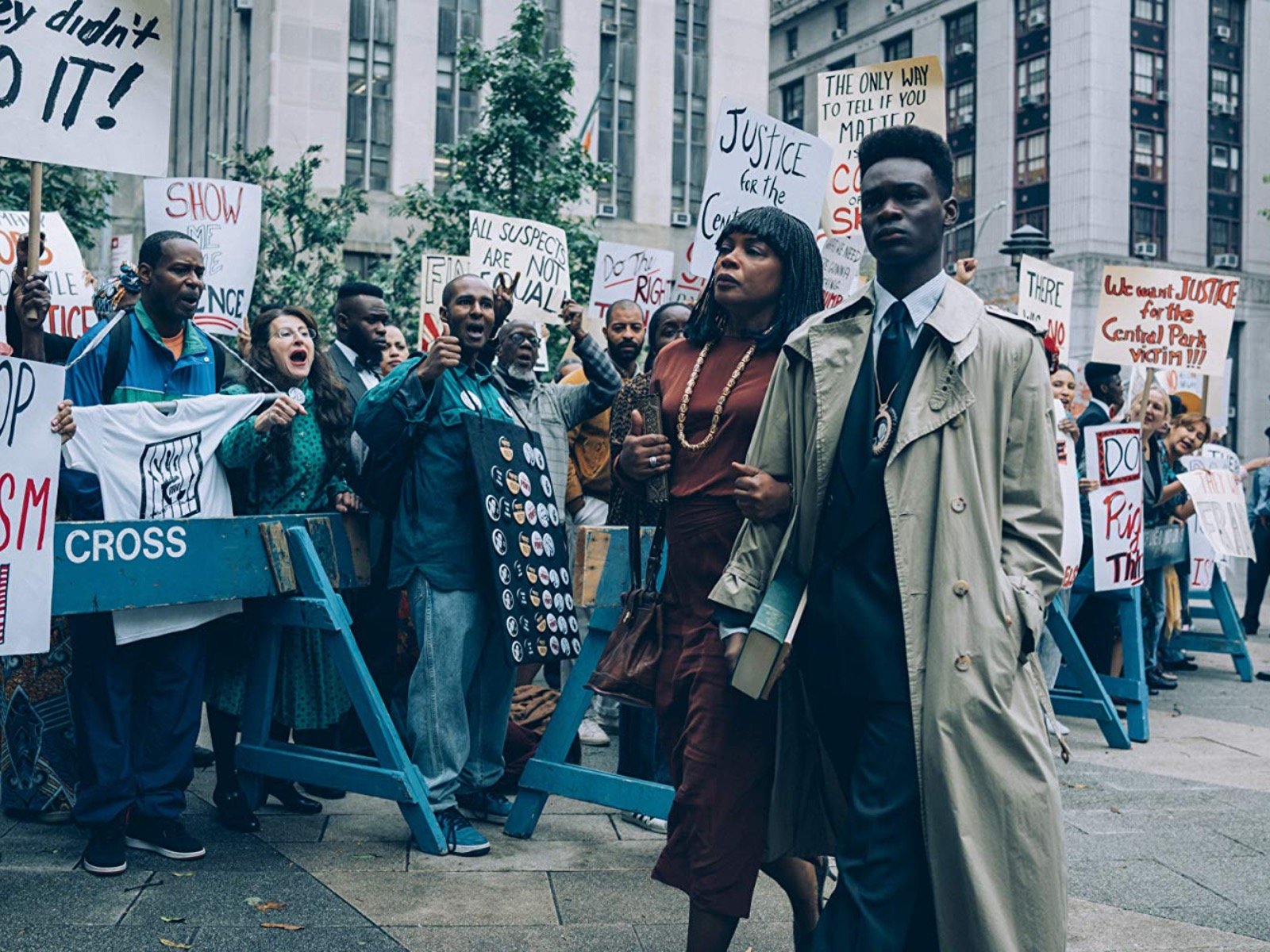"Look for more" is the motto for the 2019 Milwaukee Film Festival – and there's arguably no better chance to do exactly that and peak behind the curtain of the incredible creative process behind making a movie (or mini-series) than Saturday's free industry insiders panel at 7 p.m. at Weasler Auditorium on Marquette University's campus, featuring two of the creative minds behind one of the year's most acclaimed productions.
"When They See Us" – Ava DuVernay's Netflix mini-series about the trials of the Central Park Five, five young black boys wrongly accused of assaulting and raping a jogger in 1989 – captivated and gripped audiences when it came out this past summer, earning glowing reviews and a pile of Emmy nominations.
A significant part of that praise is due to the behind-the-scenes work of writer Michael Starrbury ("The Inevitable Defeat of Mister & Pete") and editor Terilyn A. Shropshire – both Milwaukee natives who've grown into Hollywood forces. Starrbury is now a filmmaker fast on the rise, earning an Emmy nomination for his work writing the mini-series' final installment alongside DuVernay, while Shropshire's been the unseen guiding hand behind acclaimed projects for decades, ranging from "Eve's Bayou" to "Love & Basketball" and "Beyond the Lights."
Before the two take the stage to discuss their impressive work, OnMilwaukee got a chance to chat with Shropshire about her Milwaukee movie-loving origins and the process behind piecing together an Emmy-winning project.
OnMilwaukee: What really got you interested in movies and television?
Terilyn A. Shropshire: Honestly, I’ve always loved movies. As you may know, I grew up in Milwaukee, and I spent a good deal of my time in Milwaukee movie theaters back in the day – whether it was Northridge or over toward Good Hope or the Oriental. I always loved movies. I think in some ways, when I ultimately started pursuing film, it came a little bit out of the love of that.
Initially, I went into college as a journalism major – specifically broadcast journalism. But so much of the writing involved in that also crossed over to me wanting to apply to the film department. I ended up going to USC.
It’s funny because I still remember, in terms of a Milwaukee memory, the show "Dialing for Dollars," and I saw the trailer, believe it or not, for "Star Wars" on that show. I remember a friend of mine and I going to the movie and seeing that and just being completely blown away. So at a certain point, when I started looking at colleges, I was looking at the East Coast and the West Coast – and at the time, a lot of the majors were more communications or journalism. There were only a few places that really had a film department – and I think because George Lucas had come from USC, that was one of those places that intrigued me as well as having a strong journalism school.
And then how did editing in particular become your passion?
The editing really came from as I was starting to work on my journalism degree and on my film degree. And editing is so much like writing, really. It’s a craft where you are the closest to the actual writing of the initial story. Ultimately when the film comes in, you’re constantly rewriting in a visual way in the editing. That’s what really attracted me to it. I was one of those people who people would come to me with their papers and I’d read them and say, "If you moved this paragraph there" or "Let’s move this stuff here." It was just inherently something I felt good at. It was instinctual to me. Of all the things – we had to go out and shoot and direct and do the sound and all of that – I really enjoyed most when I got all the materials together and just sat in a room and tried to figure it all out and find the film and problem-solve. So that’s how I think I ended up finally focusing on editing above the other crafts of filmmaking.
You liked the Tetris of it all, seeing how the pieces fit?
It’s funny, because I ended up calling my company Mosaic Muse, because it is like putting these pieces together to find this beautiful tapestry or piece of work. I think a lot of people don’t really understand what the craft is. You do have so much influence with the director and other people you collaborate with on what the film becomes. I really appreciate that role that I’m able to play.
I feel like editing is one of those positions where people get the basic idea of what the job is, but they don’t understand the process and the artistry involved. It’s not quite a co-director per se, but you are almost directing the movie on some level, figuring out all the pieces.
What’s great about being an editor and working with the director is you’re providing each other a certain degree of perspective. And I work with a lot of writer-directors – a lot of people who have not only generated the material but then also taken it through the process of shooting it. So ultimately, when they come in, they have a vision from the page and, of course, it becomes something else and evolves into something else. So to then be a part of the evolution where you’re really honing in on what their intention was, that part is really satisfying.

What was the editing process like on "When They See Us"? How much did you work with Ava DuVernay in the editing room?
Ultimately, Ava shot the film in New York, and the editing rooms were in Los Angeles. And there were three of us editors ultimately; I did the first part, her longtime editor and collaborator Spencer Averick did part two and prat four, and then Michelle Tesoro – another really talented editor – was brought in to do part three.
What would happen is Ava was shooting and then every day, I would receive the dailies from the day before. And it was important for Ava to have that communication with us to get her sense of how did we feel about it, how it looked and how it was cutting. Because sometimes, while she was shooting four, she would also shoot something from two or three if she was in a particular location that she knew she wasn’t going to come back to. So what generally I would do is I would look at all the dailies, and if the editor who was cutting two wasn’t on yet but dailies from two were coming on, I would give feedback on everything that I saw. And that feedback was really important for her to tell her how things were looking. So then I would immediately cutting whatever scenes were coming in, so if, for some reason, I felt like there was something additional she might need or want to pick up, I was able to communicate as quickly as possible about how those scenes were coming and how they were working.
So that was the relationship during production, and then at a certain point, all three of us were on. And on any given day, we were all sending her individual reports back based on the parts we were working on. So we were always in communication.
So you were all working on editing "When They See Us" at the same time?
I started part one – strictly on part one – but then as she started shooting other parts, then Spencer started cutting his scenes for part two and then ultimately Michelle came on when Ava started shooting the bulk of part three. So while Ava was shooting, we all started cutting our individual parts as the dailies for those parts were coming in.
Were you talking with the other editors as well? Did you talk about the style book on how you were piecing together the project, or were you working on your own separate ideas on what the edit should be?
We were absolutely talking about the story. I was introducing the boys, the characters, their lives. I’m kind of launching it, and it’s important for me to always communicate with the other editors to talk about the storylines that would be threaded through and certain relationships that were going to continue throughout the other ones. So we were always in communication about what’s happening at this point and do I need to work on this storyline because it’ll continue in yours. So it was that kind of communication.
Ultimately, I feel like in some ways each part has its own style so to speak, but at the same time, if you have the opportunity to look at it all as one, it feels like a cohesive piece. And I think that part of it is the work of Ava and the cinematographer Bradford (Young), who did an amazing job of giving it an overall feel and look. Ultimately, what also helped was, at a certain point, we all looked at each other’s cuts and made sure that the storyline and character arcs were carefully set up.
I haven’t had a lot of opportunities to work on projects like this where I’m working with other editors who are working on other parts. What I thought was great was having that collaboration with other editors and also having their perspective, where we could talk about each other’s scenes or the piece itself. I thought that was really important – because for part one, you have to care about the boys, the family. You had to understand what they went through in one to get them through two, three and four.

What was the most challenging part of this particular project for you as an editor?
I think you have a finite amount of time to introduce your audience to these boys and their lives and what they went through. And understanding that even though they were individual young men who really did not know each other that well except for two of them – Korey and Yusef knew each other – but yet they went through something collectively that changed their lives. So the biggest challenge was, in many ways, taking four specific linear stories and interweaving them in such a way that you could feel them all experiencing this life-changing journey.
Then also, I think the challenge was that you knew enough about them by the end of part one that you were really invested in taking the rest of the journey and learning more about who they became as men and who their family was and what affect the incarceration and the accusations had on everyone.
You’ve got an impressive editing career across movies and TV shows, across multiple genres and platforms. What’s been the most challenging or difficult editing project you’ve ever worked on?
I always say the next one. (laughs) When you’re in it, they all have their very specific, unique challenges. I always say that everything prepares for what’s next – but I don’t always know how or why. And I think that’s a part of the craft too. You always are faced with a different challenge. I don’t really think, "Oh, that one was harder than this." Because every one of them is different and all of them have challenges. None of them are easy. (laughs)
You do feel quite an accomplishment when you get to the point where you’re able to sit and watch it as an audience member, not so much as the editor anymore. That’s what I look forward to: being able to forget that I cut it.
You’re coming to Milwaukee this weekend. And not to give away your entire discussion, but if there was one thing you want people to take away from your panel, what is that message?
The accomplishment of doing something like "When They See Us" is the result of an incredibly talented person gathering the right people at the right time to tell the story. And I think what’s going to be really interesting is having a conversation with a writer – Michael Starrbury – who was part of the inception of it and both of us discussing how we wrote and alternately rewrote it and how that process goes.
I’m always fascinated to hear from a writer about how he feels about seeing his written words on the other side of that, after it’s come through our cutting room. Because at a certain point, there’s always a little bit of letting go that we all have when we hand off the work to the next person. He, at the very beginning, hands it to Ava, and she does what she does. At a certain point, even I have to hand it over; I still try to oversee it, but when my job is done, then it goes to sound and to a composer, who has a certain kind of audio vision of what the movie is. So it’s always a handoff and you have to trust.
And that’s what I want people to realize: It takes so much care and will to get something of quality up on screen. It’s not easy.
As much as it is a gigantic cliché to say that one has always had a passion for film, Matt Mueller has always had a passion for film. Whether it was bringing in the latest movie reviews for his first grade show-and-tell or writing film reviews for the St. Norbert College Times as a high school student, Matt is way too obsessed with movies for his own good.
When he's not writing about the latest blockbuster or talking much too glowingly about "Piranha 3D," Matt can probably be found watching literally any sport (minus cricket) or working at - get this - a local movie theater. Or watching a movie. Yeah, he's probably watching a movie.







